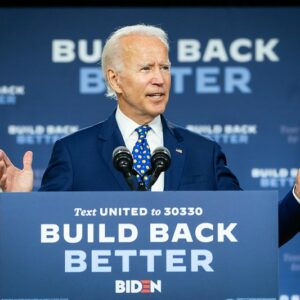Now that the “Build Back Better” plan appears to have been laid to rest, we can hope that Congress and President Joe Biden will turn their attention toward solving some of the biggest problems faced by our country rather than working to make them worse.
Unfortunately, the early indications are not great. Right out of the box in 2022, Senate Majority Leader Charles Schumer is suggesting he will move to create a “narrow” exception to the filibuster– an exception that would be all but certain to expand when Democrats again find their agenda stymied.
And he is also insisting that talks continue on the president’s doomed spending plan, although there’s no real indication that Sen. Joe Manchin’s objections to the bill have been assuaged.
While some lawmakers continue to insist the supposedly $1.7 trillion measure — the true cost is more than twice that — can be restructured, the bill rests on a foundation of extremism and deception.
For starters, the actual cost is considerably more than the sticker price because the bill is riddled with accounting gimmicks designed to mask the authors’ intent. But this fiscal deception pales in comparison to the policy problems with Build Back Better, which comprises the most extreme elements of a far-left agenda that was always intended to be rammed through on a narrow, partisan vote.
And that’s exactly why it failed.
The question remaining is not how this monstrosity can be fixed, but rather what the administration does now that its out-of-touch agenda is in tatters.
The Biden administration has a choice. It can continue to press forward with a go-it-alone partisan agenda that doesn’t have the support of Congress or the American people.
It can attempt to bypass Congress and implement elements of its agenda by executive order and agency mandates.
Or it can make an honest effort to bring people together, find common ground on key priorities, and address the real challenges our country is facing.
Pressing forward would be bad policy and bad politics. The more Americans learned about the particulars of Build Back Better, the more they opposed it. The more gimmicks that were used to hide the true cost, the more obvious it became that this was terrible policy. A zombie Build Back Better bill is the solution to nobody’s problem.
Bypassing Congress and attempting to implement parts of the package via executive action risks legal challenges and, even if successful in the short term, would likely mean reversal the next time Republicans are in power. But the threat is real enough that opponents should remain vigilant. That’s particularly true on energy policy, which was a focal point of Build Back Better and is an issue on which the administration has already demonstrated a willingness to impose its will against the wishes of Congress and the American people.
The solution the administration ought to choose is to make an honest effort to find common ground on key priorities, build a coalition around those ideas, and move forward on consensus policy proposals.
That means doing the hard work of legislating and negotiation, of sitting down with your opponents in good faith and discussing what’s really important.
Up to now, the authors of Build Back Better have ignored the real economic challenges facing the country — inflation, a labor shortage, supply chain interruptions. Instead of trying to push a partisan ideological agenda through a 50-50 Senate, these are the challenges our government should be focused on addressing in a bipartisan manner to improve people’s lives in 2022.
Manchin might be getting all the grief, but he didn’t kill this bill. The administration and congressional leadership devised a fraudulent sales pitch for an extreme partisan proposal and then couldn’t sell it to a majority in the Senate.
We should all be thankful for their failure, and encourage them to work to come up with something better that addresses the real needs of the people they represent.


